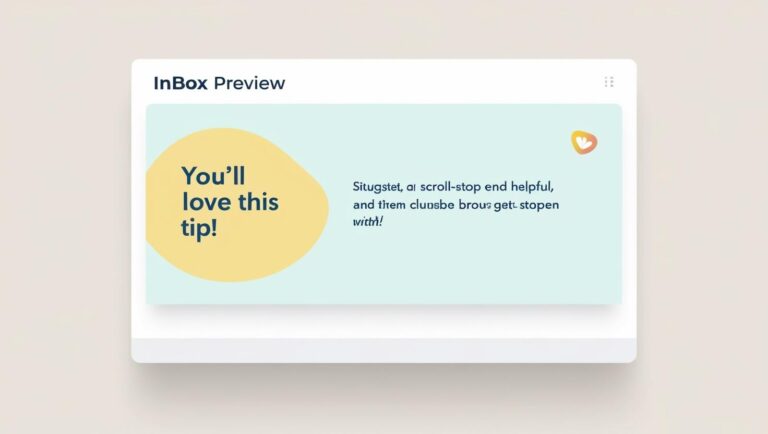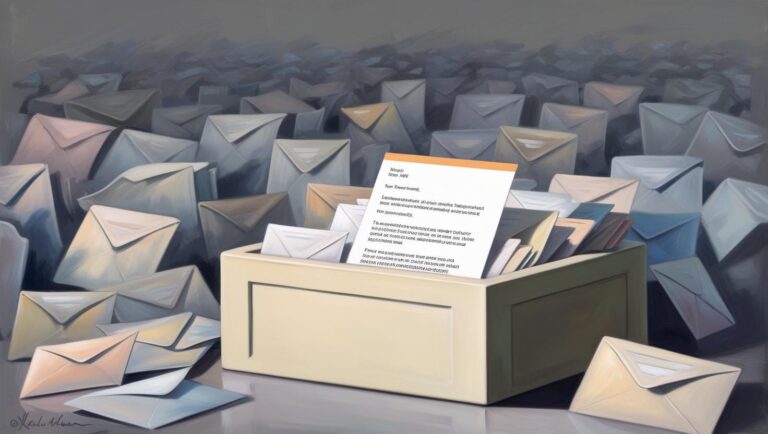Email Marketing for Small Businesses: Turning Subscribers into Loyal Customers
In today’s fast-paced digital world, small businesses often feel like they’re shouting into the void. Social media feeds scroll endlessly, paid ads compete for attention, and organic reach is unpredictable. Yet, despite all the noise, one channel consistently delivers: email marketing.
Email remains one of the most cost-effective, direct ways to connect with your audience, nurture relationships, and drive sales. Unlike social platforms where algorithms dictate who sees your content, email puts you in the driver’s seat. You’re speaking to people who have already expressed interest in your business — a captive audience, essentially.
But here’s the catch: many small businesses approach email haphazardly. They send generic newsletters, promotional blasts, or outdated content that ends up unopened or worse, flagged as spam. Done poorly, email marketing wastes time and resources. Done right, it can transform subscribers into loyal customers who not only buy but advocate for your brand.
This article will guide you through building an engaged email list, crafting compelling messages, automating workflows effectively, and using analytics to refine your campaigns. By the end, you’ll see why email marketing is still an essential tool for small business growth and how to make it work for your brand.
Why Email Marketing Still Works
In an era dominated by social media and paid advertising, you might wonder why email is worth the effort. The truth is, email offers advantages that other channels can’t match.
First, email is permission-based. Subscribers have opted in, which means they’re already interested in what you offer. This creates a level of engagement and trust that organic social posts rarely achieve. Open rates, click-throughs, and conversions tend to be higher because the audience is self-selecting.
Second, email allows for personalization and segmentation at scale. Unlike a generic Facebook post, you can tailor messages to individual interests, behaviors, and purchase history. This makes communication more relevant and effective.
Third, the return on investment (ROI) for email marketing is impressive. According to studies, for every dollar spent, businesses often see an average return of $36 — significantly higher than many other marketing channels. For small businesses with limited budgets, this efficiency is critical.
Finally, email is long-term. Social media trends shift, algorithms change, and ads get expensive. But an email list is yours. You own it, and it’s a direct line to your most valuable audience. Treat it well, and it becomes one of your most reliable growth engines.
Building a Quality Email List
The first step to email marketing success is building a list that matters. Quality always beats quantity. A smaller, engaged list will outperform a massive, disinterested one every time.
Start by offering value in exchange for contact information. Lead magnets are perfect for this. These could be free guides, checklists, exclusive tips, discounts, or downloadable resources relevant to your business. For instance, a small bakery might offer a downloadable “5 Secrets to Perfect Sourdough” guide in exchange for an email signup.
Avoid the temptation to buy email lists. Purchased lists may look impressive on paper, but they rarely yield results. In fact, they can harm your sender reputation, reduce engagement, and even land you in spam folders.
Placement matters too. Use website pop-ups, landing pages, and social media promotions strategically. A well-timed pop-up offering a discount on the first purchase can convert curious visitors into loyal subscribers. Similarly, landing pages for specific campaigns, such as a holiday sale or webinar, can attract targeted signups.
Segmenting Your Audience
Once you have subscribers, segmentation is key. Treating your audience as one homogeneous group rarely works. People have different needs, interests, and purchase behaviors, and your emails should reflect that.
Segments can be based on purchase history, browsing behavior, engagement with past emails, geographic location, or even customer personas. For example, a small fashion retailer might create separate segments for customers interested in men’s clothing, women’s clothing, and accessories.
Segmentation allows you to craft highly relevant messages. Instead of sending every subscriber a blanket “New Arrivals” email, you can deliver content that resonates. Women’s fashion buyers get women’s product updates; accessory enthusiasts get exclusive offers on new handbags. This relevance drives engagement and strengthens loyalty.
Crafting Subject Lines That Get Opened
The subject line is the first impression your email makes. It’s your gateway, and if it fails, your content never gets seen.
Effective subject lines are clear, concise, and focused on benefits. Instead of “Our New Spring Collection,” try “Refresh Your Wardrobe with Our Spring Essentials.” The difference is subtle but compelling — it highlights the value for the reader, not just the announcement.
Personalization can also increase open rates. Using a subscriber’s first name or referencing a past purchase can create a sense of connection. However, personalization should feel natural. Overuse or forced insertion can come across as spammy.
Avoid words or punctuation that trigger spam filters, such as “free,” “guaranteed,” or excessive exclamation marks. These may decrease deliverability, no matter how catchy the subject line is.
Writing Engaging, Value-Driven Content
Once your email is opened, the content must deliver value. Emails that focus solely on selling tend to be ignored. Instead, educate, entertain, and inspire your readers alongside promotional content.
Tell stories that relate to your audience. If you’re a small coffee roaster, share behind-the-scenes insights about sourcing beans or brewing techniques. Include tips, recipes, or customer spotlights. By weaving narratives into your emails, you make your messages memorable.
Clarity is critical. Break content into digestible chunks with subheadings, short paragraphs, and visuals where relevant. Always include a clear call-to-action (CTA), whether it’s visiting your online store, signing up for a webinar, or claiming a discount.
Balance your email types. For example, a small business might use a mix of educational emails, storytelling emails, product announcements, and promotional offers. This variety keeps readers engaged and prevents your emails from feeling monotonous.
Designing for Readability and Mobile Devices
Most emails are now opened on mobile devices. This makes design and readability paramount.
Keep layouts simple and clean, with plenty of white space. Avoid cluttered graphics or tiny fonts that are hard to read on small screens. Buttons and links should be large enough to tap easily, and images should load quickly without slowing down the email.
Remember, design supports your content, not overshadows it. A well-structured email guides the reader naturally from subject line to CTA.
Automating Your Email Workflows
Automation allows you to nurture subscribers without manually sending every message. For small businesses, this saves time and ensures consistency.
A welcome series for new subscribers is an excellent place to start. Introduce your brand, share your story, and highlight your best content or products. For online retailers, automated abandoned cart reminders can recover lost sales.
Other automation options include birthday or anniversary emails, product recommendations based on past purchases, and follow-ups after a purchase to encourage reviews or repeat orders.
The key is to be helpful and relevant. Automation should feel personal and timely, not robotic or spammy.
Monitoring Performance and Refining Strategy
No email marketing campaign is perfect out of the gate. Monitoring performance metrics allows you to make data-driven improvements. Track open rates, click-through rates, conversions, and unsubscribes.
A/B testing is invaluable. Try different subject lines, send times, or email formats to see what resonates. For example, testing a morning send versus an evening send might reveal when your audience is most receptive.
Act on insights. If certain content types consistently perform better, adjust your strategy to deliver more of what your audience wants. Similarly, clean your email list regularly to remove inactive subscribers, which helps maintain deliverability and engagement.
Common Mistakes to Avoid
Even experienced marketers fall into common traps. Bombarding subscribers with too many emails can lead to fatigue and unsubscribes. Neglecting to clean inactive addresses decreases engagement and can hurt your sender reputation.
Another critical mistake is failing to include an unsubscribe link. Not only is this legally required in most regions, but it also respects your audience and builds trust.
Finally, avoid focusing solely on promotions. Emails that consistently add value — through insights, tips, or storytelling — cultivate loyalty far better than constant sales pitches.
Bringing It All Together
Email marketing for small businesses is not about sending messages; it’s about creating meaningful connections. By building a high-quality, engaged list, segmenting intelligently, crafting compelling content, and using automation thoughtfully, small businesses can turn subscribers into loyal customers.
Investing in email marketing is investing in your brand’s relationship with your audience. It requires attention, strategy, and continuous refinement, but the payoff is substantial: higher engagement, repeat sales, and a community of customers who feel valued and informed.
Start today by reviewing your email strategy, experimenting with content and design, and listening to the data. Over time, your emails will evolve from being just a communication tool to becoming one of your most powerful drivers of growth and customer loyalty.



